- Home
- Nancy Krulik
Never Box with a Kangaroo Page 3
Never Box with a Kangaroo Read online
Page 3
“You can’t rest on top of a mummy bee,” Mick says. “She might sting.”
Thump. Thump. Thump. Thump.
Something is thumping on the ground behind us. I turn around.
What is that?
It could be a two-leg.
Or maybe a four-leg.
I’m not sure.
It’s standing on just two paws. Like a two-leg does.
But it has a long tail. And fur. Like a four-leg does.
“What is that?” I ask Mick.
“A kangaroo,” Mick tells me.
Well, that makes sense. After all, this place is called Kangaroo Island.
“Is a kangaroo a two-leg or a . . .” I stop in the middle of my sentence.
Wiggle, waggle, what just happened?
“Did you see that?” I ask Mick.
“What?” Mick asks.
“The big kangaroo has a little one attached to it,” I say. “See? He’s sticking his head out of her belly.”
Mick laughs. “That’s a joey,” he tells me.
“How do you know his name?” I ask.
Mick laughs again. “His name’s not Joey. He is a joey: a baby kangaroo. The big kangaroo must be his mummy. She’s carrying him in her pouch.”
“In her what?” I ask.
“That pocket on her belly,” Mick explains. “Where he stays warm and safe. She feeds him in there, too.”
Hmmm . . .
Mick is a really small puppy. No bigger than the kangaroo in that pouch.
“That’s it!” I shout.
“What’s it?” Mick asks me.
“You can join a kangaroo family,” I tell him. “You can ride around in a pouch and be all warm and safe.”
Mick looks over at a group of kangaroos that has gathered near us.
“I am tired,” he says finally. “It would feel nice to be carried for a while.”
“There are lots of little kangaroos in pouches,” I tell him. “You would have plenty of puppies to play with.”
“Joeys,” Mick corrects me.
“Whatever you call them,” I say, “you would be able to play together.”
“That’s true,” Mick agrees.
I watch as Mick slowly pads over to a big kangaroo.
“Will you be my family?” he asks her.
The kangaroo looks down at him. But she doesn’t answer. I guess that’s because kangaroos don’t speak dog.
Mick looks over at me sadly. But I can’t let him give up.
“Get into her pouch,” I call to him. “It’s all warm and safe in there, remember?”
Mick jumps up high. He tries to dive into the kangaroo’s pouch.
Plop.
He misses and falls to the ground.
The kangaroo looks surprised. She hops backward and bangs into another kangaroo. He was sleeping on the ground. But he’s awake now.
Boing! The used-to-be-sleeping kangaroo jumps up, surprised.
Then he turns around and spots another kangaroo staring at him. He bashes him with his tail.
The kangaroo doesn’t like that. Pow! He punches back with his paw.
Suddenly, there’s a whole lot of jumping, punching, kicking, and tail-bashing going on.
“Mick!” I shout. “Get out of there! You’re gonna get stomped on!”
Punch!
Mick slips right between the two fighting kangaroos.
Kick!
He leaps out of the way of a kangaroo paw.
Bash!
He darts out of the path of a swinging kangaroo tail.
“This is NOT the family for me!” Mick says, and he runs over to me.
“Definitely not,” I agree. “They fight too much.”
Mick looks over at the joeys inside their mothers’ pouches. His tail sinks. His ears flatten.
“I didn’t find a family here,” he whimpers. “I haven’t found one anywhere. I wonder if I ever will.”
Mick is so sad. But I don’t know what to say. I’m wondering the same thing.
“Maybe I should try to get back on the metal machine that floats in the giant puddle,” Mick says. “If I’m lucky, it will take me back to where I came from.”
“Why would you want to go there?” I ask him. “Your mummy and sisters aren’t at the bridge anymore.”
“There are lots of dogs back where I came from,” Mick answers. “And they don’t have any rules about how many dogs can live in one family.”
“But the dogcatcher could still be looking for you,” I remind him.
Mick doesn’t answer. He’s already run off toward the big puddle.
I have to stop him! I can’t let Mick go back to his old home. Not when there’s a dogcatcher on the loose!
CHAPTER 9
Huff . . . Puff . . .
My tongue is hanging out of my mouth.
My paws are tired.
Mick runs really fast. It’s hard to keep up with him. But I have to stop him from getting on that metal machine.
Except . . .
There’s no metal machine here. There’s nothing but water. Lots and lots of water.
“Hey. Where did you two come from?”
Suddenly, I hear another dog. I turn around quickly to see a big old mixed-breed.
“I’ve never seen you two ankle-biters on Kangaroo Island before,” the dog tells me.
“I don’t bite,” I tell him. “Biting is bad. Unless you’re biting into a hunk of meat, of course.”
“He just means we’re puppies,” Mick explains. “Ankle-biter is another word for a little two-leg. Or in our case, puppy four-legs.”
“You’d better get back to your families,” the old mixed-breed says.
Mick lies down on the ground. He buries his head in his paws.
“What’s with him?” the old mixed-breed asks me.
“He doesn’t actually have a family anymore,” I tell him. “We’ve been trying to find him a new one all day.”
“I’m a pup all alone in the world,” Mick groans.
“Pup . . . ,” the old mixed-breed repeats slowly. “That gives me an idea. I might know a great family for you. One with lots of pups.”
“But there can only be two pups in a family on Kangaroo Island,” I say.
“Two dog pups,” the old mixed-breed says. “But I didn’t say these pups were dogs, did I?”
CHAPTER 10
“What are those things?” I ask the old mixed-breed a few minutes later. We are standing in front of a large group of really big . . . I don’t know what.
They have fur like dogs. But they have whiskers like cats.
They have things that look like paws, only they are huge and flat.
Some of these creatures are playing in the sand. Others are playing in the giant water bowl.
“They’re sea lions,” the old mixed-breed tells us.
“The little ones look like they’re having fun,” I point out to Mick.
“Sea-lion pups love to play—in and out of the water,” the old mixed-breed says.
Bark! Bark!
The sea lions are barking! I don’t know what they’re saying, but they are definitely barking.
Two of the sea-lion pups are sitting on a rock, eating a fish. Just watching them makes me hungry.
Mick must be hungry, too, because he runs right over to the two pups and sniffs at the fish.
The sea-lion pups jump back, surprised. And then . . . they move over so Mick can take a bite!
I guess sea lions are good sharers.
Mick eats really fast. So do the sea lions. In a flash, the fish is all gone.
The sea-lion pups waddle toward the water.
Bark! Bark!
The sea lions are barking again. I do not understand w
hat they are saying.
But Mick seems to understand. Because he walks over to the edge of the water. And then . . .
Mick starts swimming! Just like the sea-lion pups!
Uh-oh! Suddenly, one of the sea-lion pups disappears. I can’t see him anywhere.
“Where did that pup go?” I ask the old mixed-breed. “Is he buried under the water?”
“Just watch,” he says calmly.
So I watch. A minute later, the pup’s head pops up. He’s holding a fish in his mouth!
The two sea-lion pups and Mick start swimming toward us. When they get back on land, they all start eating the fish.
“The sea-lion pup was just getting food,” the old mixed-breed explains. “There are a lot of fish in the water.”
That means Mick will have a lot to eat—if the sea lions let him join their family.
Waddle, waddle, waddle. A huge sea lion waddles over to where Mick and the sea-lion pups are eating.
“Who’s that?” I ask the old mixed-breed.
“That’s their mother,” he tells me.
The mother sea lion looks at Mick.
Mick looks back at the mother sea lion.
Gulp.
I hope the mother sea lion isn’t angry that Mick is there. Because the sea-lion mother is huge. If she wanted to, she could crush Mick!
I’m really scared.
But Mick isn’t. He moves in close and rubs against her.
The mother sea lion looks down and nuzzles Mick’s fur. That seems kind of like what Josh does to me when I crawl up on his lap.
Suddenly, I hear a funny noise. It sounds a little like barking and a little like laughing. It’s coming from the two sea-lion pups. They are climbing on top of their mother.
They look like puppies playing.
The next thing I know, Mick is scrambling up onto the mother sea lion’s back.
Bark! Bark!
The sea-lion pups bark happily as they slide down from their mother and land on the ground.
“Whee!” Mick shouts as he slides with them. “This is fun!”
The sea-lion pups waddle back to the water. Mick runs beside them.
Whoosh. The sea-lion pups dive underwater.
Whoosh. Mick dives underwater.
One sea-lion pup pops up. He has a fish in his mouth.
The other sea-lion pup pops up. He has a fish in his mouth.
Then Mick . . .
Wiggle, waggle, uh-oh.
Mick isn’t popping up. I don’t see him anywhere.
My heart starts thumpety, thump, thumping. Where is he?
Bark! Bark!
The sea-lion pups start barking really loud.
The mother sea lion waddles toward the water.
She starts swimming fast. Faster. Fastest.
Then she dives under the water. And a minute later . . .
There’s Mick! And he’s got a fish in his mouth!
I watch as the sea-lion mother helps push Mick out of the water and onto the sand.
My tail starts wagging. It’s very happy. My tail knows that Mick has found his family.
The best part is Mick didn’t even have to ask to be part of the sea-lion family. He just fit right in.
Seeing Mick with his family makes me miss my family. It’s time for me to go home.
“I have to leave, Mick!” I shout.
“Hooroo, Sparky!” Mick shouts to me. “And thanks.”
Hooroo is another one of Mick’s funny words. But this time I think I know what it means.
Good-bye.
“Hooroo, mate!” I shout back to Mick. “Have fun with your family!”
CHAPTER 11
Diggety, dig, dig. I am digging a big hole near the tree where I buried my bone. Dirt is flying everywhere.
Snort!
The fluffy koala still doesn’t like having me near his tree.
Diggety, dig, dig—
There it is! My magic bone. Right where I left it.
SNORT!
Now the koala is getting really mad. He shakes the tree branches. Pink flowers fall from the tree.
“Okay!” I shout up to him. “I’m leaving.”
I open my mouth and . . . CHOMP!
Wiggle, waggle, whew. I feel dizzy—like my insides are spinning all around—but my outsides are standing still. Stars are twinkling in front of my eyes—even though it’s daytime! All around me I smell food—fried chicken, salmon, roast beef. But there isn’t any food in sight.
Kaboom! Kaboom! Kaboom!
I’m still standing under a tree.
I look up. There’s still something furry up in the branches.
Uh-oh. What if my bone didn’t take me home this time? What if I’m stuck in . . .
Meow!
Hey! Wait a minute. That’s not an angry koala.
That’s an angry cat!
It’s Queenie the meanie, our neighborhood cat.
My bone brought me home, just like I wanted it to!
“Go away, Queenie the meanie!” I bark.
Hiss!
Queenie bares her claws at me. She leaps from the tree branch and lands on top of my fence. Then she disappears on the other side.
I like when Queenie disappears.
Now I’m all alone in my yard. But not for long. Josh will be home soon. And I will be here waiting for him.
I run to the back of the yard, where the flowers are. I drop my bone in the hole I left there. Then I push the dirt back over the bone. It is buried. No one will know it is there—except me, of course.
Vroom. Vroom.
That’s the sound of Josh’s metal machine with four round paws.
Suddenly, the gate opens.
My Josh is home!
“Hi, Josh! Hi, Josh!” I bark. “Do you wanna play? Do you? Do you?”
Josh bends down and pets my head. He picks something off my fur. Then he gives me a funny look.
Josh is holding a pink flower. It must have landed on my fur when the koala shook those tree branches.
I wish I could tell Josh about Kangaroo Island, where I got that flower.
I wish I could explain how my new friend Mick found himself a family.
But I can’t.
Josh bends down and picks up a ball that is sitting in the grass. He starts to throw it.
Uh-oh!
“No, Josh!” I bark. “Not the ball!”
I run over to the tree and pick up a big stick. I run back and drop the stick at Josh’s feet.
“Throw the stick!” I bark. “It’s safer. Baby penguins do not hide inside sticks.”
So Josh throws the stick. And I run after it. My tail wags. Playing with Josh always makes me happy.
Josh may not speak dog, but he understands a lot about me. And I understand a lot about him.
I guess that’s what happens when you’re part of a family.
Fun Facts about Sparky’s Adventures in Australia
Kangaroo Island
This is Australia’s third-largest island. Almost one-third of the island is used for wildlife sanctuaries—places where birds and animals are kept safe from hunters.
Koalas
These furry creatures may look like bears, but they are actually in the same family as kangaroos. Koalas have sharp claws that help them climb trees. They only eat one food: the leaves of the eucalyptus tree.
Little Blue Penguins
Australia’s little blue penguins are the smallest of all the penguin species. They cannot fly, but they are great swimmers. That’s lucky, because penguins eat fish that they catch in the ocean, and they drink salty seawater, too!
Kelly Hill Caves
These underground caves are famous for the rock formations that hang from the
ceilings. The Kelly Hill Caves are home to many animals, including bats, frogs, and owls.
Ligurian Bees
Kangaroo Island was named a bee sanctuary more than 130 years ago. That keeps the bees on the island safe from the pesticides that kill off other types of bees. Each year tourists make special trips to visit the honey farms of Kangaroo Island, just to taste the sweet treat created by Ligurian bees.
Kangaroos
Kangaroos travel in groups called mobs. When kangaroo babies are born, they are tiny and cannot walk or eat on their own. So they stay in their mothers’ pouches where they are carried and fed. When the joeys are about four months old, they start to take short walks on their own.
If adult kangaroos are threatened, they can use their feet to kick and their upper paws to swipe and punch. This makes it look like they are boxing.
Australian Sea Lions
This rare type of sea lion can be found living in big groups at Kangaroo Island’s Seal Bay Conservation Park. They find fish to eat in the shallow water near the shore. Mother sea lions not only raise their own young, but they have also been known to take care of other pups that may have been abandoned.
About the Author
Nancy Krulik is the author of more than 200 books for children and young adults, including three New York Times Best Sellers. She is best known for being the author and creator of several successful book series for children, including Katie Kazoo, Switcheroo; How I Survived Middle School; and George Brown, Class Clown. Nancy lives in Manhattan with her husband, composer Daniel Burwasser, and her crazy beagle mix, Josie, who manages to drag her along on many exciting adventures without ever leaving Central Park.
About the Illustrator
You could fill a whole attic with Seb’s drawings! His collection includes some very early pieces made when he was four—there is even a series of drawings he did at the movies in the dark! When he isn’t doodling, he likes to make toys and sculptures, as well as bows and arrows for his two boys, Oscar and Leo, and their numerous friends. Seb is French and lives in England. His website is www.sebastienbraun.com.

 Long Time, No Sea Monster
Long Time, No Sea Monster Vote for Suzanne
Vote for Suzanne Red, White, and Achoo!
Red, White, and Achoo! Watch That Witch!
Watch That Witch! Fangs for Having Us!
Fangs for Having Us! Hair Today, Gone Tomorrow!
Hair Today, Gone Tomorrow! It's a Bird, It's a Plane, It's Toiletman!
It's a Bird, It's a Plane, It's Toiletman! Any Way You Slice It
Any Way You Slice It On Thin Ice
On Thin Ice Gotta Warn the Unicorns!
Gotta Warn the Unicorns! Write On!
Write On!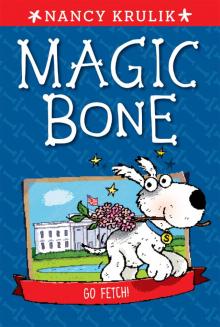 Go Fetch!
Go Fetch! No Biz Like Show Biz
No Biz Like Show Biz Free the Worms!
Free the Worms! Crash!
Crash! Get Lost!
Get Lost! Someone's Got a Screw Loose
Someone's Got a Screw Loose Wet and Wild!
Wet and Wild! The Twelve Burps of Christmas
The Twelve Burps of Christmas A Royal Pain in the Burp #15
A Royal Pain in the Burp #15 Horsing Around
Horsing Around Out to Lunch
Out to Lunch Quit Buggin' Me! #4
Quit Buggin' Me! #4 On Your Mark, Get Set, Laugh!
On Your Mark, Get Set, Laugh! Attack of the Tighty Whities!
Attack of the Tighty Whities! Grilled Cheese and Dragons
Grilled Cheese and Dragons The Case of the Loose-Toothed Shark
The Case of the Loose-Toothed Shark How Do You Pee in Space?
How Do You Pee in Space? Rootin' Tootin' Cow Dog
Rootin' Tootin' Cow Dog Soccer Shocker
Soccer Shocker Three Burps and You're Out
Three Burps and You're Out Never Box with a Kangaroo
Never Box with a Kangaroo Science No Fair!
Science No Fair! Bad Rap
Bad Rap Open Wide
Open Wide Holly's Jolly Christmas
Holly's Jolly Christmas Return to the Scene of the Burp
Return to the Scene of the Burp No Bones About It
No Bones About It Don't Sneeze
Don't Sneeze Worse, Worser, Wurst
Worse, Worser, Wurst Super Special
Super Special Burp or Treat . . . Smell My Feet!
Burp or Treat . . . Smell My Feet!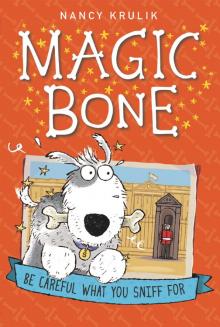 Be Careful What You Sniff For
Be Careful What You Sniff For Going Overboard!
Going Overboard! Be Nice to Mice
Be Nice to Mice 'Snot Funny
'Snot Funny Nice Snowing You!
Nice Snowing You! Karate Katie
Karate Katie Don't Be Such a Turkey!
Don't Be Such a Turkey! Dance Your Pants Off!
Dance Your Pants Off! Something's Fishy
Something's Fishy Ripped at the Seams
Ripped at the Seams The Case of the Beagle Burglar
The Case of the Beagle Burglar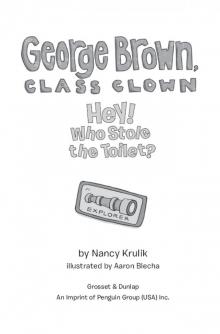 Hey! Who Stole the Toilet?
Hey! Who Stole the Toilet? It's Snow Joke
It's Snow Joke Going Batty
Going Batty Tip-Top Tappin' Mom!
Tip-Top Tappin' Mom! Give a 'Bot a Bone
Give a 'Bot a Bone Phone-y Friends
Phone-y Friends Don’t Mess with the Ninja Puppy! #6
Don’t Mess with the Ninja Puppy! #6 No Messin' with My Lesson
No Messin' with My Lesson Puppy Love
Puppy Love I'm Game
I'm Game A Katie Kazoo Christmas
A Katie Kazoo Christmas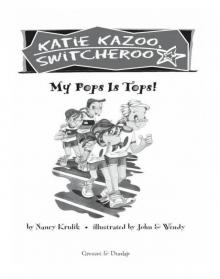 My Pops Is Tops!
My Pops Is Tops!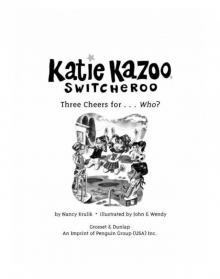 Three Cheers for...Who?
Three Cheers for...Who? Follow That Furball
Follow That Furball Flower Power
Flower Power Gotcha! Gotcha Back!
Gotcha! Gotcha Back! Camp Rules!
Camp Rules! Love Stinks!
Love Stinks! Who's Afraid of Fourth Grade?
Who's Afraid of Fourth Grade? I Hate Rules!
I Hate Rules! Drat! You Copycat!
Drat! You Copycat! Eww! What's on My Shoe?
Eww! What's on My Shoe? Dribble, Dribble, Drool!
Dribble, Dribble, Drool! Oh, Baby!
Oh, Baby! The Case of the Tortoise in Trouble
The Case of the Tortoise in Trouble My Robot Ate My Homework
My Robot Ate My Homework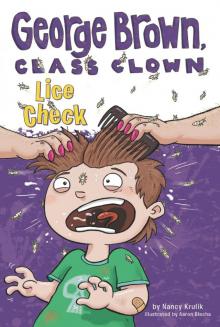 Lice Check
Lice Check The Case of the Green Guinea Pig
The Case of the Green Guinea Pig Pup Art #9
Pup Art #9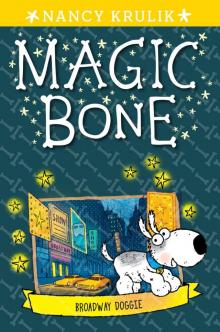 Broadway Doggie
Broadway Doggie